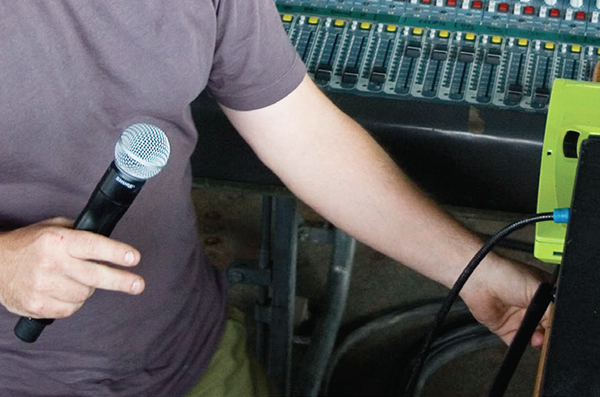Joe Dougherty is one of my oldest friends in the pro audio business – we first worked together in the mid-1990s while serving in the U.S. Air Force as sound technicians for the Airmen of Note big band jazz ensemble. We covered tens of thousands of miles together, working together on hundreds of gigs with their associated load-ins, setups and teardowns.
Across all those road miles, we were able to share our philosophies of sound, logistics, and people in general. It was a great learning experience! Recently, Joe brought up an interesting idea, so interesting, in fact, that I’m sharing it here with you: what every aspiring A2 working in the world of corporate audio should know. Let’s start with this story from Joe, who currently works as an A1, primarily in the Las Vegas market:
“Sometimes the client may have her own very strong opinion about where her lavalier microphone and beltpack transmitter should be placed, but it’s up to the A2 to set the standard necessary for optimum audio success. But wait a minute – there are the usual concerns from the video crew, and this event is being broadcast live. No cables can show and further, the client is wearing a low-cut evening gown.
“Now’s the time to bring on the diplomacy and negotiate what can be a very tricky personal space issue in resolving where to locate the mic and its transmitter. This is where a quick sense of humor comes into play while still understanding the thinking and viewpoint of your corporate clientele.
“I faced this very situation – a powerful CEO wearing a low-cut gown with the event being broadcast live. We talked over the dilemma at rehearsal, eventually negotiating a well-hidden spot on her thigh where I’d attach the transmitter with an elastic strap.
“Right before the event went live, she walked up to me and said, ‘Are you ready to feel me up again? It was the highlight of my day.’ I immediately replied, ‘Just so you know – downtown that costs $50,’ to which she shot back, ‘I’ve only got a hundred (dollar bill) but I’m definitely on again for this tomorrow!’
“This sort of banter – remember, be discrete and sensitive – can help take the client’s mind off of something which can be embarrassing at the least to completely terrifying.” That lesson colorfully learned, let’s move on to additional “do’s” from Joe for the successful A2:
— Be confident in your approach when miking clients; consistency is paramount for the success of the A1.
— Be meticulous with labeling. If someone is assisting you, and/or you end up pulled into a different area of the job, make sure that anyone else can easily figure out what you’ve done.
— Have water, mints and/or gum available. I knew an older rock ‘n’ roll stage tech who always had a small bucket of candy in his work area – Elton John would come by every night for a piece of butterscotch candy.
— Be considerate both as a technician and a co-worker. This may not be reciprocated. Do it anyway.
— Always carry the spare handheld transmitter in your pocket and make sure the “spare spare” is in the stage manager’s pocket – and make sure the A1 knows which is which.
— Always be up to speed with the various brands of equipment you’re working with. Each wireless system brand, for instance, has its little idiosyncrasies. We don’t bring up wireless systems randomly; particularly with all of the still-ongoing changes with the frequency spectrum, it seems to be the aspect presenting the most challenges at present.
Cautionary tale: you’re working at an event, and after scanning and fastidiously programming wireless system frequencies and setting transmission power to the appropriate parameters relative to propagation distance, some cowboy who works for the hotel will up the output of his wireless mics and overdrive his transmitter inputs with his little mixer because he doesn’t understand the input sensitivity level anomalies between the mixer and the ceiling loudspeaker amplifiers. And this will step all over your work – be ready for this kind of problem and roll with it.















